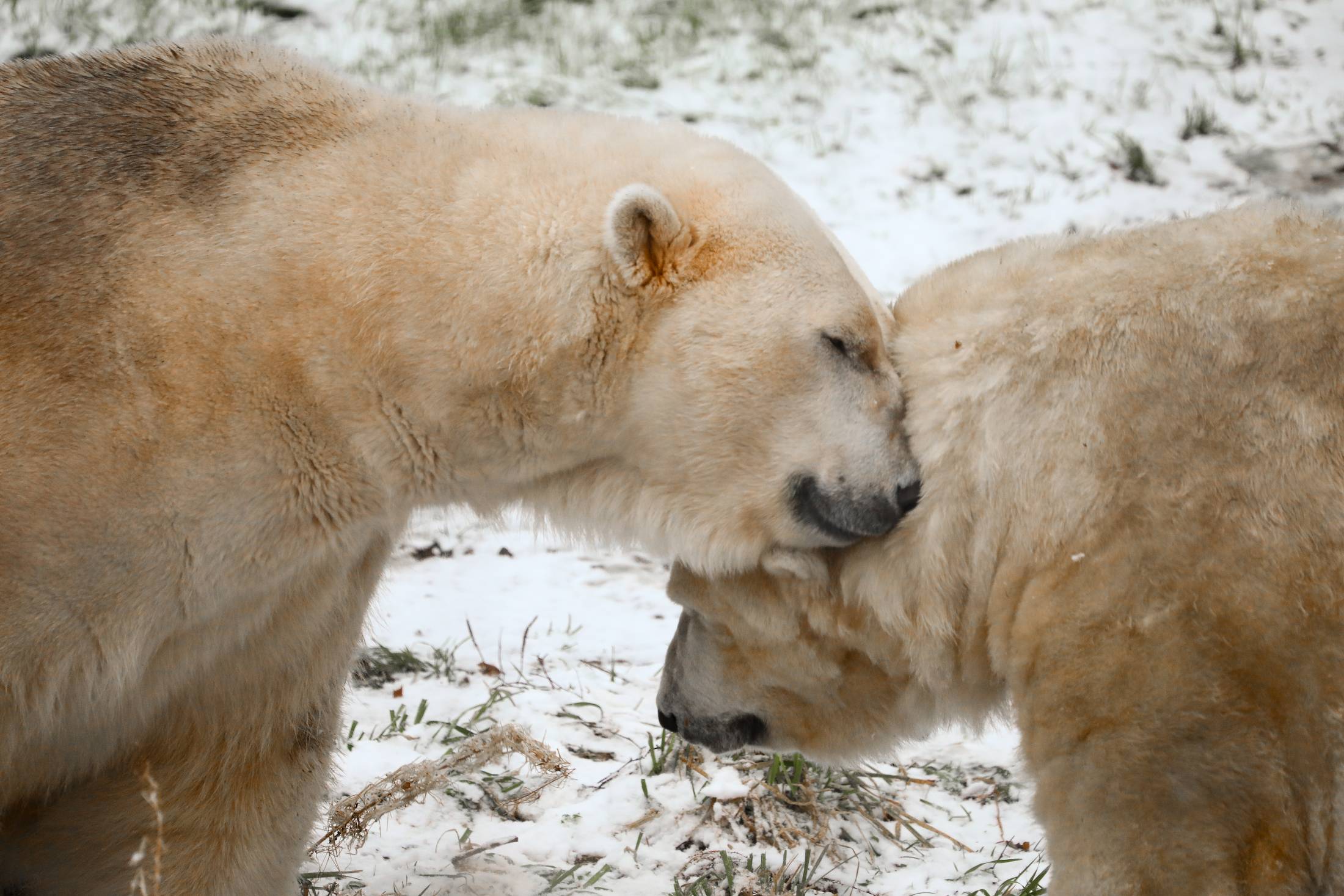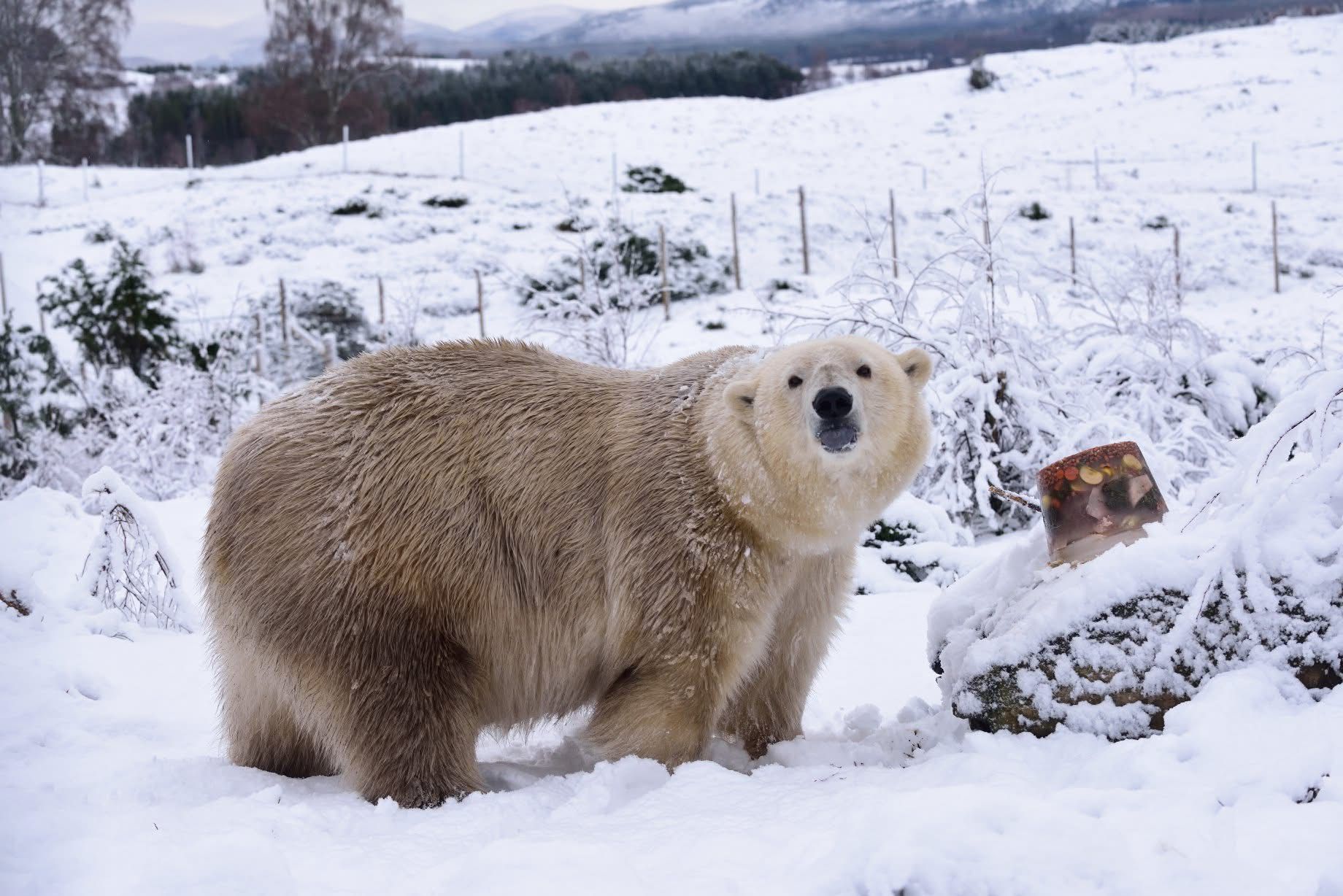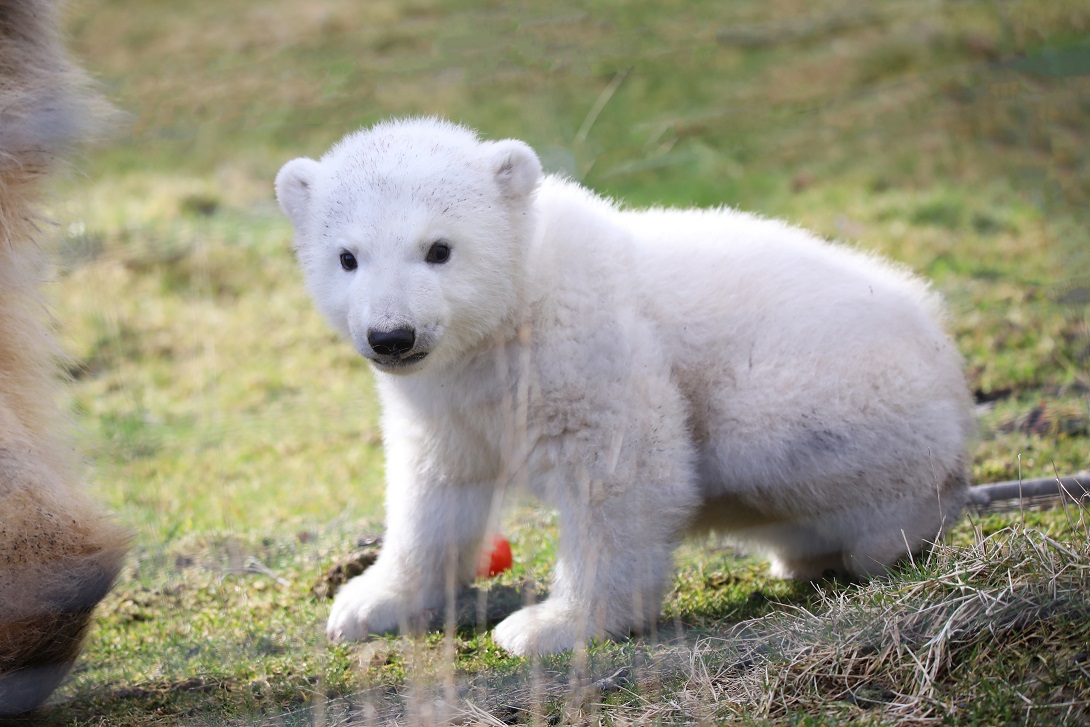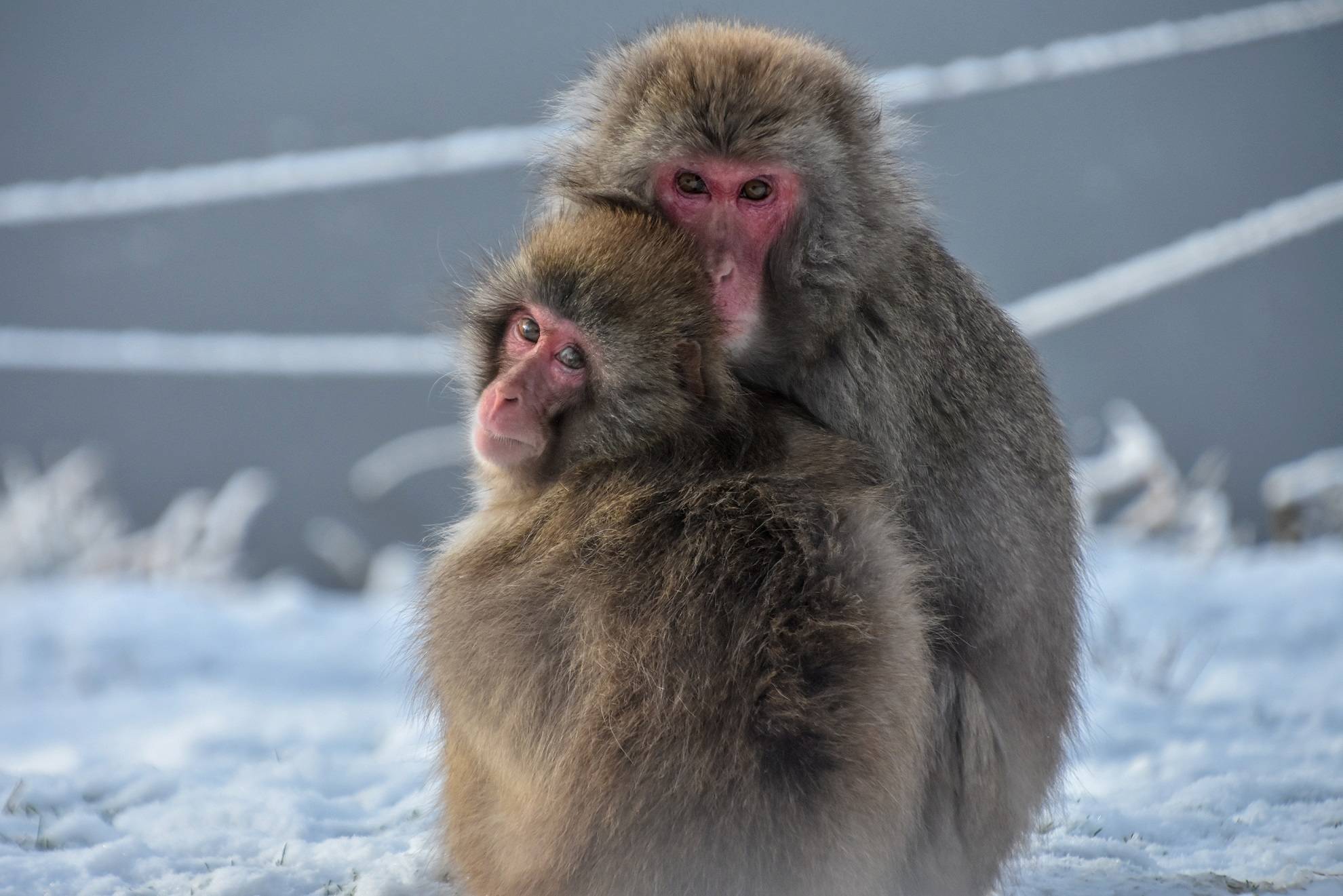Polar bear
Ursus maritimus

There are four polar bears here at Highland Wildlife Park – Walker, Arktos, Victoria and her cub, Brodie.
Walker (born in December 2008) and Arktos (born in November 2007) are fast friends who enjoy spending their time chasing, wrestling, swimming and eating together.
Victoria (born December 1996) joined us in March 2015, travelling from Aalborg Zoo in Denmark where she had reared her first cub, Milak.
After mating with Arktos, Victoria gave birth to Hamish, the first polar bear cub to be born in the UK for 25 years. Hamish moved to Yorkshire Wildlife Park in October 2020 and his little brother Brodie was born in December 2021.
Population
Decreasing
Diet
Carnivore
Habitat
Polar
Fact file
Polar bears are the largest living land carnivore, with adult males reaching up to 2.6 metres in length
Male polar bears can weigh up to 800kg, and are twice the size of females
Polar bears are found in the frozen wilds of the Arctic in Canada, Alaska, Greenland, Russia and Norway
Polar bears are well adapted to survive in one of the harshest environments on our planet. As well as their thick fur, they have a layer of fat, called blubber, that insulates their bodies from the frosty air and near-freezing water
While they may look white, their skin is actually black! This helps them soak up the sun’s rays and keep warm
They are able to detect prey almost a kilometre away and up to a metre under the compacted snow
Why do we have polar bears in the Scottish Highlands?
Polar bears are under threat due to the loss of habitat. They need sea ice as a hunting platform to catch seals, but global warming is causing the ice to melt earlier each year. This means that the polar bear has less time to hunt and put on weight for their summer fast or for a female to remain in the snow den caring for her young cubs. it is predicted that climate change will lead to a significant decrease in population numbers over the next 40 years.
Our polar bears are part of the European Endangered Species Programme (EEP) and, as a wildlife conservation charity, we care for both the animals here at the park and work to protect endangered species around the world. From providing genetics expertise and veterinary health, to protecting wild places with local partners, and even restoring threatened species to the wild, we are active where we are needed most.
Find out more![Polar bear cub Brodie looking at camera with tongue out [eye contact] IMAGE: Amy Middleton 2022](https://images.rzss.org.uk/media/Highland_Wildlife_Park/HWP_animals/Polar_bear/polar_bear_1.jpeg)
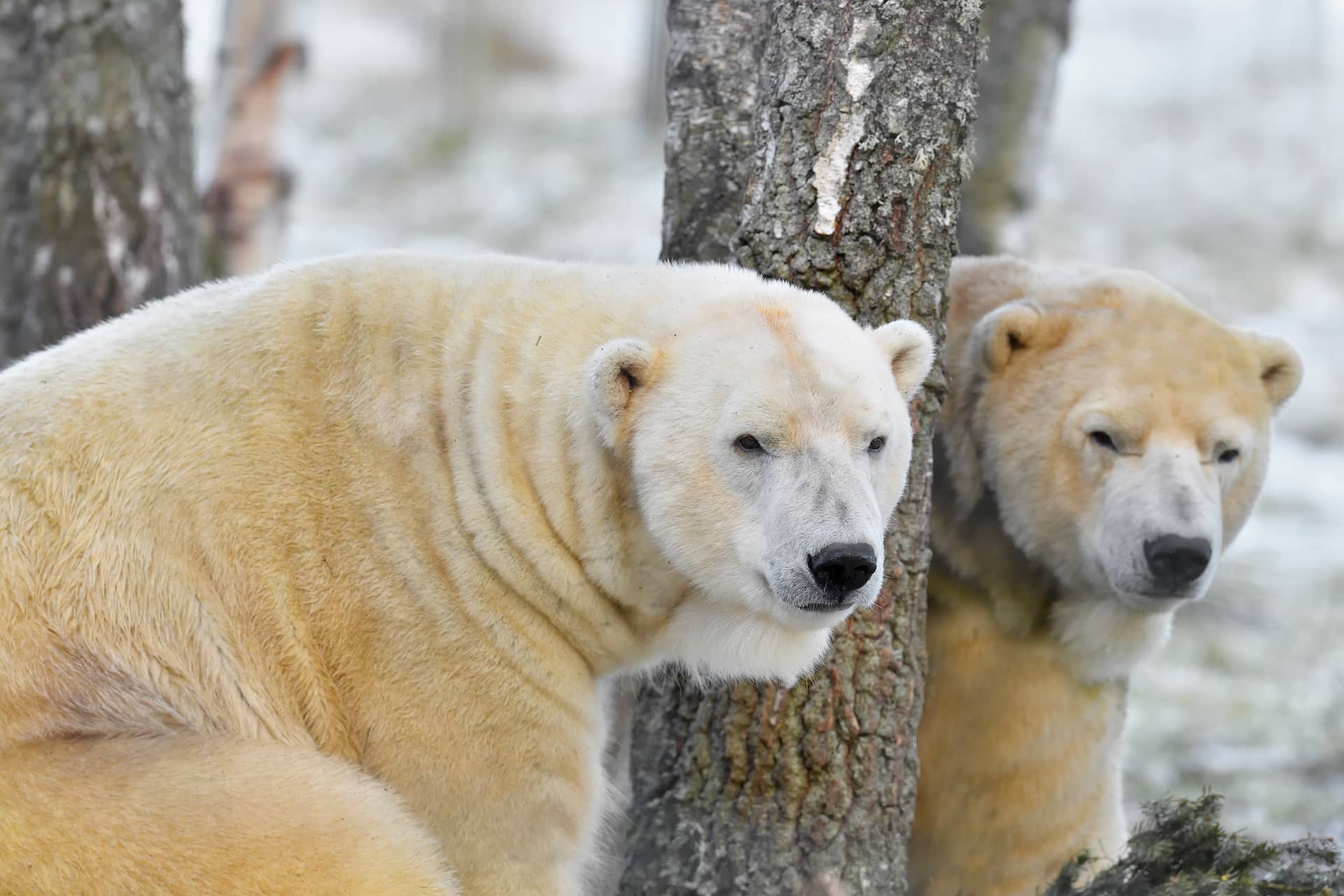
How we're helping
Like all the animals in our care, Arktos, Walker, Victoria and Brodie are amazing ambassadors for their relatives in the wild and help hundreds of thousands of people connect with nature every year. They encourage visitors to learn about the threats facing wildlife and the action they can take to help.
Since the species first arrived at the Royal Zoological Society of Scotland’s (RZSS) Highland Wildlife Park in 2009, our charity's polar bears have driven deeper engagement with wildlife for visitors and developed incredible relationships with their keepers, who provide an excellent standard of care.
Find out more about RZSS conservation
